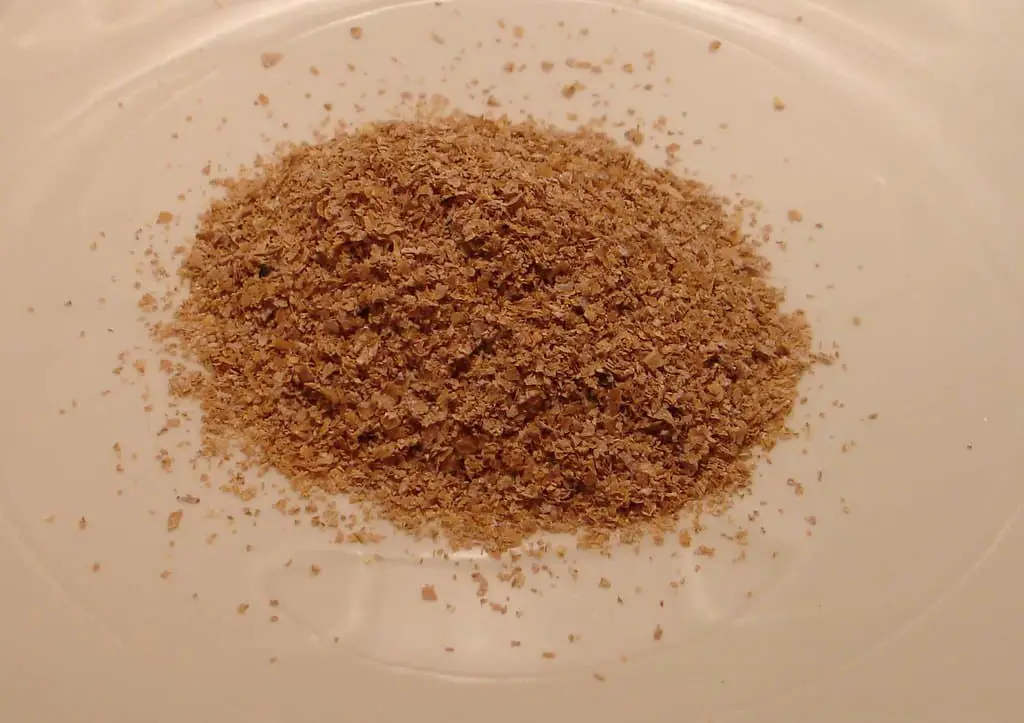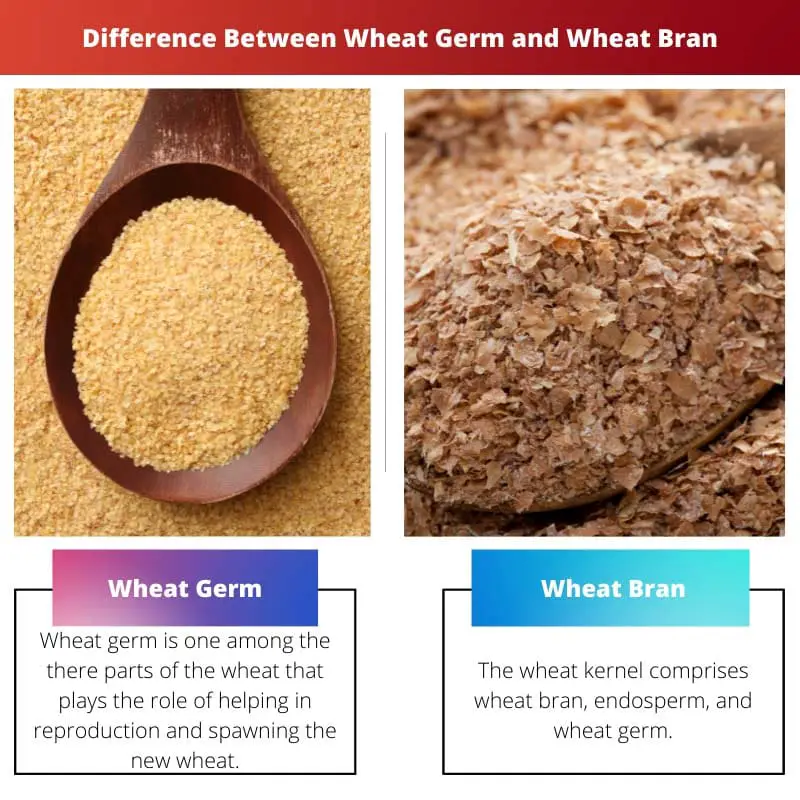Cultivated and harvested mainly for its nutrients, wheat is a staple food in many parts of the world and is used as a seed and cereal. Wheat falls under the genus Tritium.
Since wheat is a good source of fibre, vitamins, and minerals, it is widely used in many forms for consumption.
Key Takeaways
- Wheat germ is the nutrient-rich embryo of wheat, while wheat bran is the hard outer layer of the wheat grain that is high in fiber.
- Wheat germ is a good source of vitamin E, folate, and essential fatty acids, while wheat bran is high in fiber, manganese, and phosphorus.
- Wheat germ can be added to smoothies, cereal, or baked goods, while wheat bran can be used as a healthy addition to baked goods or as a topping for cereal or yogurt.
Wheat Germ vs Wheat Bran
The wheat bran, which makes up roughly 14% of the whole grain’s content, is the outer layer or shell of the wheat kernel that is removed during milling. While the wheat germ is the center of the wheat kernel, which develops into a new wheat plant. It is the tiniest component of the grain.

Wheat germ is the interior part that is rich in starch. It contains gluten, so gluten-intolerant people cannot consume it. It contains a large number of carbohydrates.
Apart from its high fibre and nutritional content in some people, it may induce diarrhoea and dizziness. A few people may also feel nauseous after consumption.
Wheat bran is one of the three components of the wheat kernel.
It is a byproduct that is stripped away during the process of milling. It is an excellent source of plant compounds, minerals, and fibre.
It lowers the risk of chronic diseases. It has a rich nutritional profile that improves the consumer’s overall health.
Comparison Table
| Parameters of Comparison | Wheat Germ | Wheat Bran |
|---|---|---|
| Calories | Two tablespoons of wheat germ have about 45 calories and 1 gram of fat. | Two tablespoons of wheat bran have about 50 calories and 0.5 grams of fat. |
| Sugar | Wheat germ consists of a minimal quantity of sugars. | Wheat bran lacks simple sugars. |
| Protein | Wheat germ holds 3 grams of proteins for every two tablespoons. | Wheat bran has two grams of proteins for every two tablespoons. |
| Vitamins and Minerals | Wheat germ consists of a good amount of folate. | Wheat bran consists of a high quantity of niacin. |
| Part of the wheat kernel | Wheat bran is the part that is discarded while milling. | Wheat germ is the wheat kernel’s interior, nutritious, and starch-rich part. |
What is Wheat Germ?
Wheat germ is one of the there parts of the wheat that plays the role of helping in reproduction and spawning new wheat. It accounts for the significant nutritional component of whole wheat grain.
To increase the shelf life, wheat germ and husk are discarded from refined wheat products.
Wheat germ is added in granola bars, cornbread, and cereals and is also available in raw form.
It is also commonly used as toppings for fruit pies, yoghurt, ice cream, and cereals. It is available in solid, liquid, and gelcap forms.
It is also a nutritional supplement, besides being used as a food additive. Instead of breadcrumbs, they can be added to meatballs and other meat recipes.
It is a healthier option. It is a rich source of vegetable proteins, fibre, zinc, thiamine, vitamin E, potassium, phosphorous, and antioxidants.
It boosts immunity and also improves the cardiovascular health of the consumer. It reduces the risk of heart disease and slows the ageing process.
It prevents premature ageing and helps in maintaining blood pressure, and aids in the process of digestion. It is perfect for women who are in the stage of menopause.
What is Wheat Bran?
The wheat kernel comprises wheat bran, endosperm, and wheat germ. The outer and rigid layer of the wheat kernel is called the wheat bran, richly packed with several nutrients and fibres.
It tastes sweet and has a nutty flavour. It is added to the texture of the food and provides a good taste for bread, muffins, and other baked goods.
It is rich in zinc and copper. It accounts for half of the daily value of selenium and provides more than the daily value of manganese.
Besides being highly nutritious, it is also low in calories, making it a healthy snack.29 grams of wheat bran has only 63 calories.
It has a very minute amount of total fat, saturated fat, and cholesterol but a rich plant-based protein content.
29 grams of wheat bran holds 5 grams of protein. It is also a fibre-rich food, and 29 grams of wheat bran has a very high amount of 13 grams, almost 99 per cent of the daily value of dietary fibre.
The presence of digestible fibre accelerates and eases stool movements. It is an excellent remedy for constipation.
It is also an excellent medicine for bloating and stomach-related discomforts.

Main Differences Between Wheat Germ and Wheat Bran
- Wheat germ is the inner layer of the wheat kernel, whereas wheat bran is the highly nutritious part and is present outside the kernel.
- Wheat germ comprises fewer calories but more fat than the amount present in wheat bran.
- Wheat germ has minimal simple and natural sugars, while wheat bran is completely sugar-free.
- Wheat germ is comparatively more protein-rich than wheat bran.
- Wheat germ is highly rich in folate, and wheat bran has a high amount of niacin.




